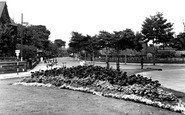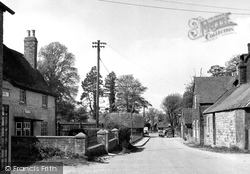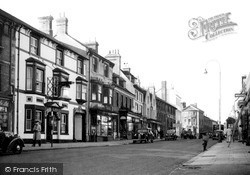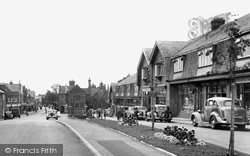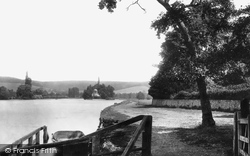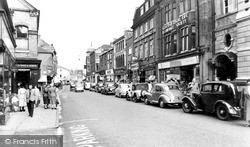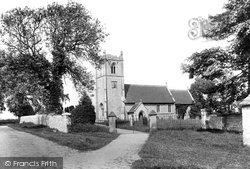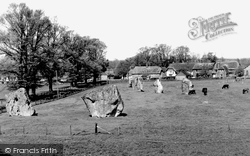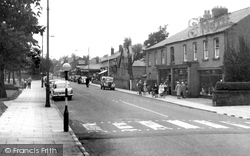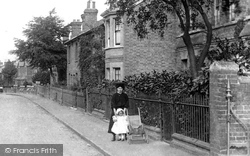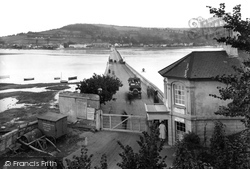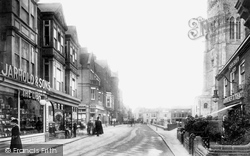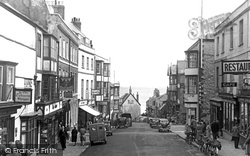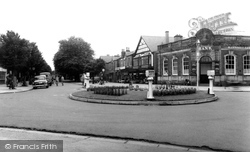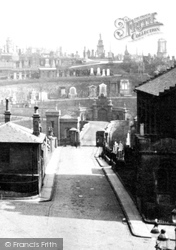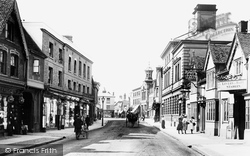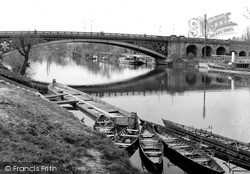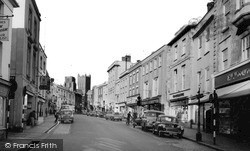Places
36 places found.
Those places high-lighted have photos. All locations may have maps, books and memories.
- Hest Bank, Lancashire
- Kents Bank, Cumbria
- Copthorne Bank, Sussex
- Banks, Lancashire
- Sutton Bank, Yorkshire
- Astwood Bank, Hereford & Worcester
- Dacre Banks, Yorkshire
- Ten Mile Bank, Norfolk
- Matlock Bank, Derbyshire
- Bank, Hampshire
- Hesketh Bank, Lancashire
- Far Bank, Yorkshire
- Bank's Green, Hereford & Worcester
- Banks, Cumbria (near Lanercost)
- Banks, Dumfries and Galloway (near Kirkcudbright)
- Bunsley Bank, Cheshire
- East Bank, Gwent
- Hanwood Bank, Shropshire
- Hoole Bank, Cheshire
- Howbeck Bank, Cheshire
- Papermill Bank, Shropshire
- Pickup Bank, Lancashire
- Malkin's Bank, Cheshire
- Meal Bank, Cumbria
- Sandy Bank, Lincolnshire
- Scilly Bank, Cumbria
- Steel Bank, Yorkshire
- Bogs Bank, Borders
- Alsagers Bank, Staffordshire
- Bury's Bank, Berkshire
- Brandon Bank, Cambridgeshire
- Cat Bank, Cumbria
- Cadney Bank, Clwyd
- Dawley Bank, Shropshire
- Dean Bank, Durham
- Lade Bank, Lincolnshire
Photos
1,065 photos found. Showing results 1,361 to 1,065.
Maps
786 maps found.
Books
15 books found. Showing results 1,633 to 15.
Memories
6,743 memories found. Showing results 681 to 690.
Port Quin
As a young man with my first car and girlfriend we toured Cornwall and came across Port Quin, wow what a place. No one came here, most of the houses were derelict, the small car park to the left was the only place to park about six ...Read more
A memory of Port Quin in 1969
The Monkey Run
Yea, brings back the old times, the good times, in Runcorn. On a Sunday night up the Monkey Run lol, the old people will know the name.
A memory of Runcorn in 1860 by
Memories Of Village Haircuts
Just before the 1960’s transformed our innocent lives, all us village boys had a limited choice of tonsorial art; indeed you could count the number of available haircuts (styles wasn’t a word used for men or boys) ...Read more
A memory of Sherington in 1960
Kings Cottage
Whilst at Priors Marston my grandfather, Rowland Joseph Marsh and his wife Annie Elizabeth Lavender had twins: Leonard and Vera Marsh. They already had a daughter Kathleen Annie. I am the eldest daughter of Kath Marsh, who is ...Read more
A memory of Priors Marston by
Hill House
I moved back to Hill House, with my brothers, Adrian, Anthony & Twins Russell & Howard. Micky , John & Julian arrived a few years later. I lived there untill 1963, when I got married, and moved to a flat at Kelsale court. I ...Read more
A memory of Kelsale in 1951 by
Love That Place!
Born at Petersfield in 1940, my first home was Berry Cottage, down Sandy Lane, opposite Sibley's farm. Berry cottage had only 4 rooms (2 up and 2 down), no running water, only a well and later a tap down in the lane. I remember ...Read more
A memory of Rake Firs in 1940 by
Great Horton
Our family lived in Lidget Green, near the Great Horton railway station. I was born in 1949 near Bradford (Wakefield), and lived in Lidget Green from toddlerhood until we emigrated in 1960. The neighborhood provided many memories ...Read more
A memory of Bradford in 1959 by
Life At Avon Carrow For A Yank Abroad
I moved into Avon Carrow in the Spring of 1970. I was stationed at RAF Croughton but moved my family to this small village in Warwickshire because that life was what we were used to, coming from the ...Read more
A memory of Avon Dassett by
St Malachys Primary School 1951 To 1956
I was born in Manchester in 1945, and moved with my family to Kingsly Crescent Collyhurst flats. My father died in 1948, and my mother, brother Joe and I moved to Elizabeth-Ann Street, Collyhurst, where ...Read more
A memory of Collyhurst in 1951 by
My Family
My family were the Davises who lived in the Bear House, Trecastle. Most of the people in the area were related to us. We were originally of Gypsy desent and can be traced back many hundreds of years. We were also related to the Pike ...Read more
A memory of Trecastle by
Captions
2,423 captions found. Showing results 1,633 to 1,656.
The road to Swindon from Beckhampton pass- es through Avebury village and the Neolithic stone circle and henge (bank and ditch).
Later used as an area office by Courage until 1978, the whole site has now been redeveloped as the main local branch of Barclay's Bank, although the original façade has been retained.
Possibly the most obvious are the loss of the cinema on the opposite side of the road from Lloyd's Bank (H276053, in the mid distance, right) and the rebuilding of the church (H276132, right)
From the river bank near the Leander Club we can look across to the river front of Henley and imagine its bankside wharfs alive with the shouts of bargees and watermen loading their barges, with
The National Westminster Bank (extreme right) is next door to a seed merchant, still an important trader in a country town before seeds were brightly packaged and sold by garden centres.
The pretty village of Thorp Arch with its green, Manor House and old mill leads down to the banks of the Wharfe, with the bridge (1772) carrying the road to Boston Spa.
The entire complex comprises an outer circular bank with an inner ditch. Inside was a great stone circle enclosing two smaller circles.
Possibly the most obvious are the loss of the cinema on the opposite side of the road from Lloyd's Bank (H276053, in the mid distance, right) and the rebuilding of the church (H276132, right)
For a while, the mansio and its attendant shops were surrounded by a series of banks and ditches.
Safer livings were gained beyond river and sea when commercial growth pro- vided jobs in hotels, houses, shops, clubs and banks.
Children of the famous Gurney family (one of the founders of Barclays' Bank) stayed in lodgings in this street, on the site of the present Boots the chemist.
Today, we know these as the site of Carlisle Castle and, across the narrow valley, Stanwix Bank.
Ye Olde Tobacco Shoppe (left) was the home of blacksmith Samuel Govier, who provided the artist James Abbott McNeill Whistler with a back room for his studio.
This was produced from willow and alder, which was readily available from the river banks. The river also provided water-power for the mills and transport for barges.
linked the north end of the bridge to the Saltmarket (originally called the Waulcergait (street of the wool- scourers), while the Drygate ran east from the cathedral and terminated on the west bank
Martins Bank (right) was acquired by Barclays in 1969. The elms on the left of Chapel Lane were removed in 1975 because of the ravages of Dutch elm disease.
linked the north end of the bridge to the Saltmarket (originally called the Waulcergait (street of the wool- scourers), while the Drygate ran east from the cathedral and terminated on the west bank
The Art-Deco electricity showrooms reopened as part of the Litten Tree chain, now the Vestry, and the former NatWest Bank became the Old Banker; a few days later, hearing people giggle, the management
Next to the Cock is Barclays Bank, built by Sharples, Exton and Lucas in 1841. Next-door-but-one to Barclays is the establishment of William Payne, an agricultural, veterinary and dispensing chemist.
The National Westminster Bank (extreme right) is next door to a seed merchant, still an important trader in a country town before seeds were brightly packaged and sold by garden centres.
Wood Green Farm still cultivates acres of pasture on the north bank of the Severn as far as Burlish Top, but changes came about after World War II.
In 1846 Glasgow's relentless expansion (James Mackay) These remains are situated on the banks of the River Kelvin east of the Botanic Gardens.
Beyond, Lloyds Bank (established 1835) remains, with the 15th-century Star Hotel visible behind. The pillar box (right) still stands, but Hepworth's has become Superdrug.
Farther west on the south bank the great Princes Dock was filled in and became the site for the Glasgow Garden Festival of 1988, exactly a century after Glasgow had hosted the first of its four
Places (158)
Photos (1065)
Memories (6743)
Books (15)
Maps (786)

